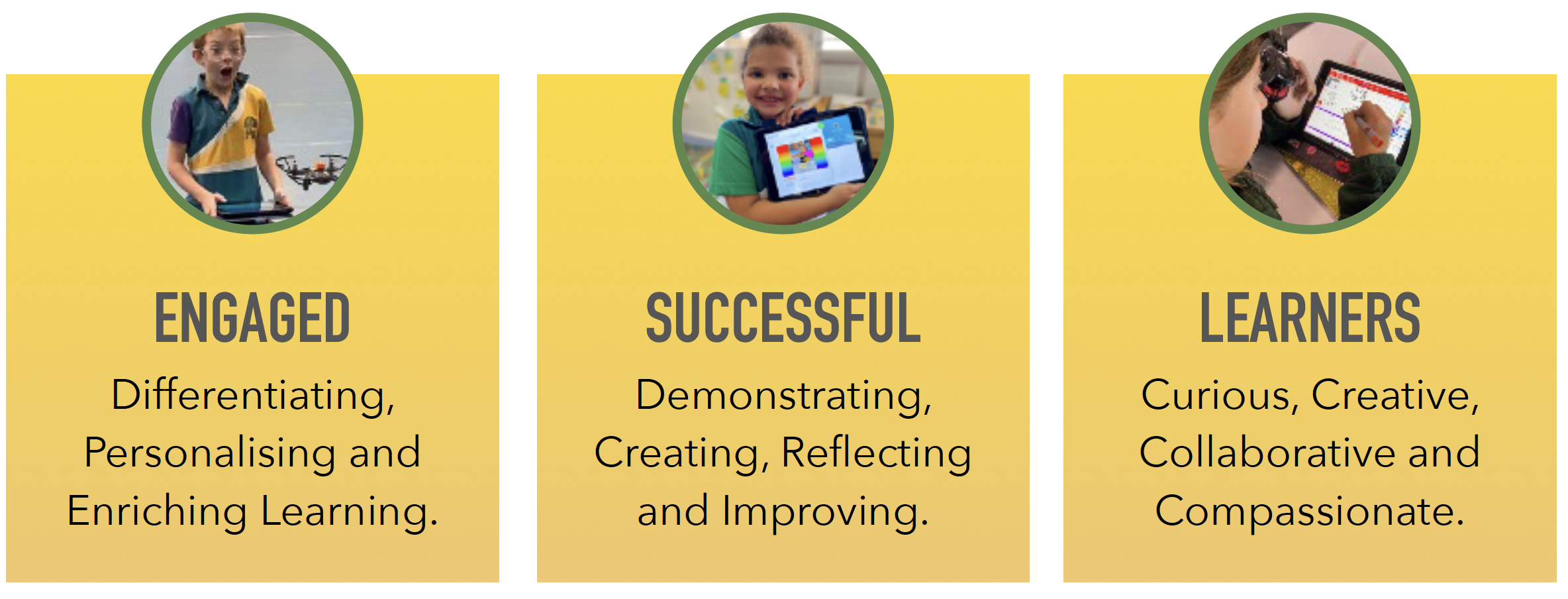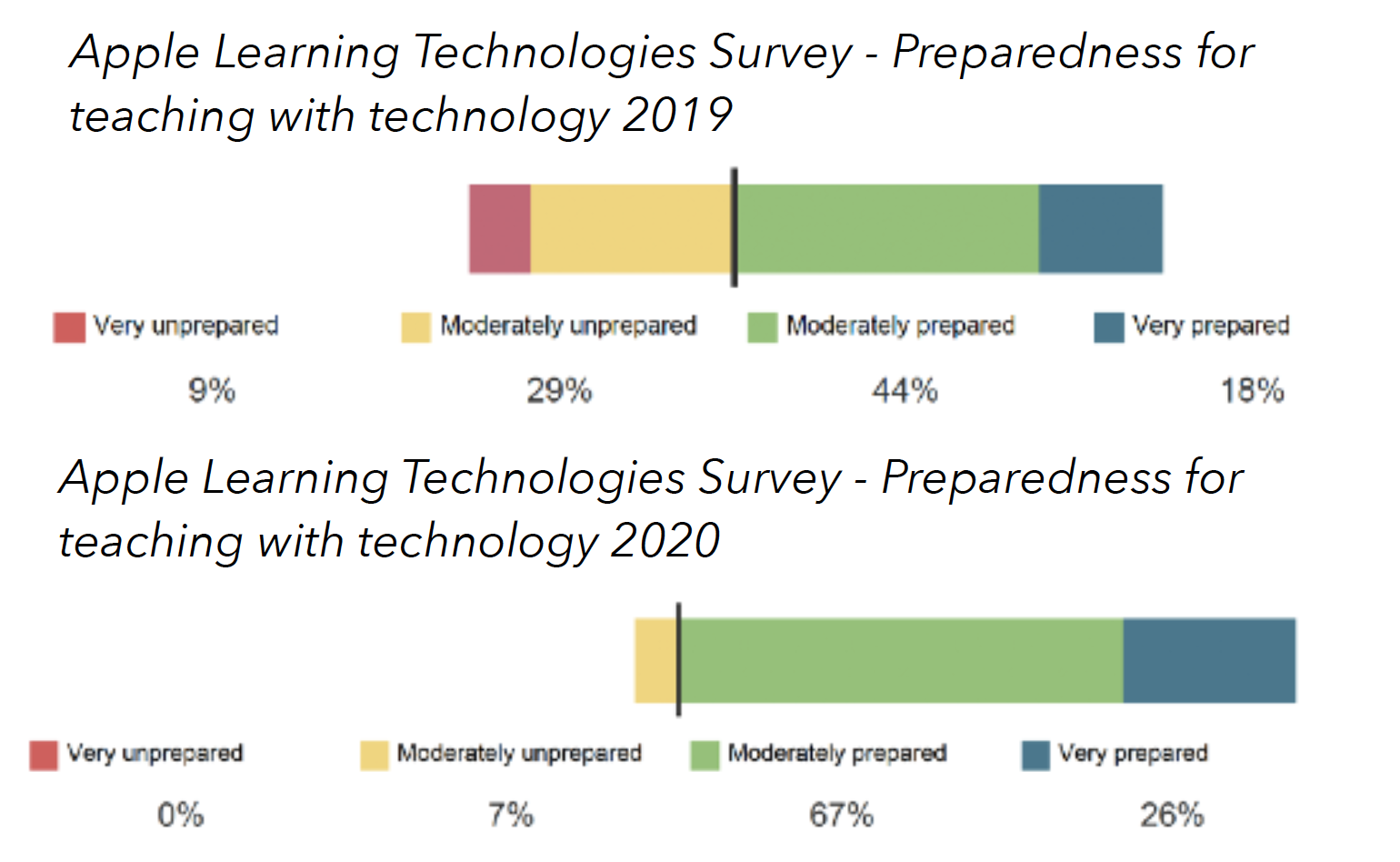Today
Kallangur State School is a large suburban school catering to 900 students. We have 83% of students from families in the bottom half of the Socio-Educational Advantage Index. It is our moral imperative to try and provide our students a real chance to have a happy and successful life. Life opportunities are clearly linked with educational success. Providing quality learning experiences to engage children is the key. This aspiration is the reason why students have access to iPads across the whole school. We are focussed on building a learning community of parents, students and school staff working together. ‘Leveraging Digital’ through iPads gives our students a whole new dimension to their learning experiences and enables them to connect with the world.

Vision
Kallangur State School’s vision, ‘Engaged, Successful Learners’, has evolved by engaging community and building collective teacher efficacy through action. The plan for greater utilisation of technology to enrich and add value to learning experiences to personalise, make learning more accessible, creative and engaging, is tied to the school’s Explicit Improvement Agenda. School leadership identified the critical importance to support teachers to enact this vision. The Head of Technologies (HOT) role was established in 2019 to mentor all teachers to engage in action learning cycles. Enhanced student learning opportunities can be attributed to over 50% of teaching staff voluntarily attending regular professional learning events. To showcase ‘Learning with iPads’ with the community, student created content is shared via social media.
Learning

Enabling student agency through the personalisation and creation of dynamic content is enhanced by powerful reflective feedback loops. Students are engaging in international collaborative projects using Padlet as a platform to communicate and share digital content. Students are creating augmented reality environments of cities, anatomical diagrams of animals and scientific explanations of weather. Students are utilising animation in Keynote to explain procedures on washing hands, mathematical concepts and creating interactive stories. Students also design, code and print 3D models to solve real world problems.
Through coaching, teachers are up-skilled in the TPACK framework as well as the SAMR model to further understand the complexity and depth of learning tasks with technology. Teachers differentiate simultaneous learning activities providing greater accessibility for individual students. Teachers create digital resources, sharing books, video tutorials, exemplars and lessons within collaborative online spaces. Teachers are also empowering students to track their learning progress in Numbers. Regular in-school ‘TeachMeets’, which showcase student digital learning is broadening the scope of activities across the school.
Strategic planning and maintenance of infrastructure and devices is fundamental for a highly effective whole school digital learning environment. Having in place mobile device management software, mobile charging stations, WiFi & bandwidth upgrades, interactive projectors, TV’s with attached Apple TV for collaborative group work, a mobile shared fleet of iPads with a 1:2 ratio for students not participating in the 1:1 program and flexible learning spaces have all enabled quality learning outcomes.
Success
Focussed discussions with teachers provides a narrative of professional growth, attitudes and goal setting. The HOT monitors teacher progress through a developed progression model to collaboratively develop an action learning plan. An outcome, is the students are participating in a greater range of digital learning activities. Reviewing Seesaw student learning journals highlight an increase in students engaging in SAMR’s modification and redefinition stages. Seesaw student learning portfolios have 97% parent connections with an average of 1500 weekly parent visits. An outcome of new digital pedagogy has resulted in a whole school 18.6% increase in overtime assessment data in A-C English results from 2017. This number equates on average to 160 students moving into or across the A – C achievement scale.

What’s next
Kallangur State School will maintain our financially sustainable technology program, aiming for all students to be learning in a 1:1 iPad class. The continuation of a digital pedagogy mentor (HOT) to support teachers will be fundamental to advance digital pedagogy capabilities. Already commenced, a major focus is to embed New Pedagogies for Deep Learning across the school. As a result, curriculum units are being redesigned with connections to the
Elements of Learning. It is a goal to expand our links with local, national and international schools to participate in collaborative real-world projects. Finally, to innovate with technology and iPads in the teaching, learning and management of the
school’s long-term sustainability projects.